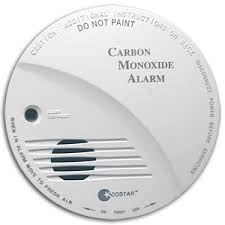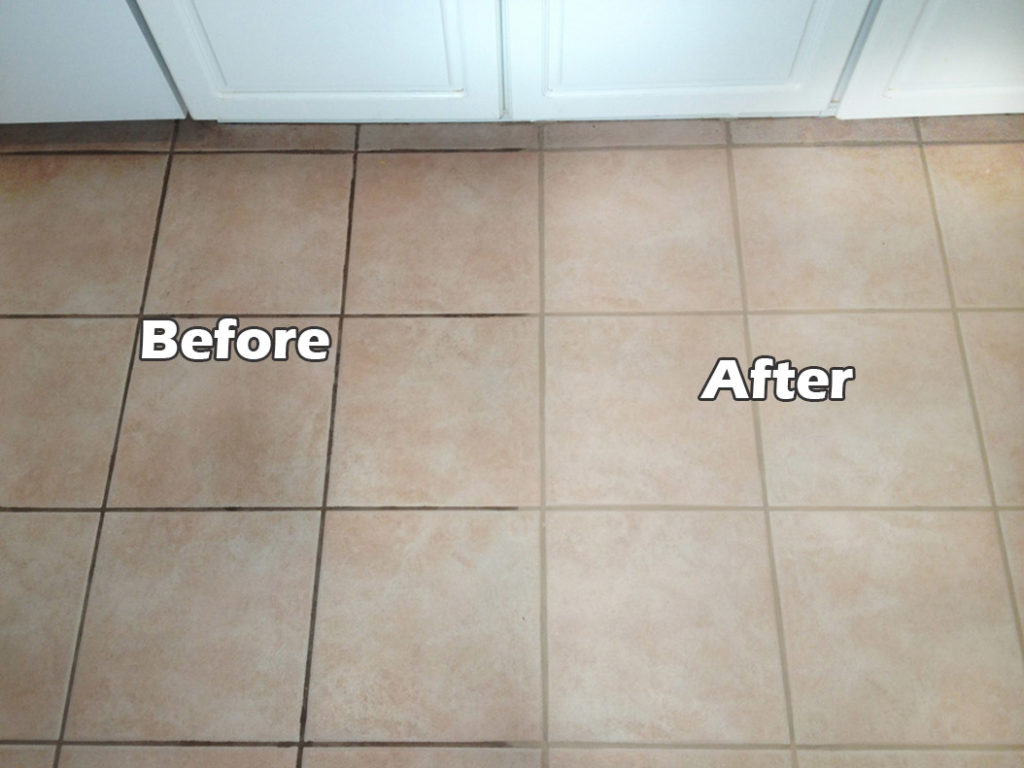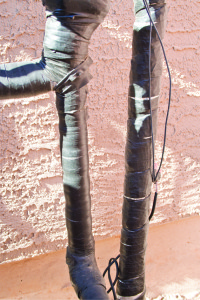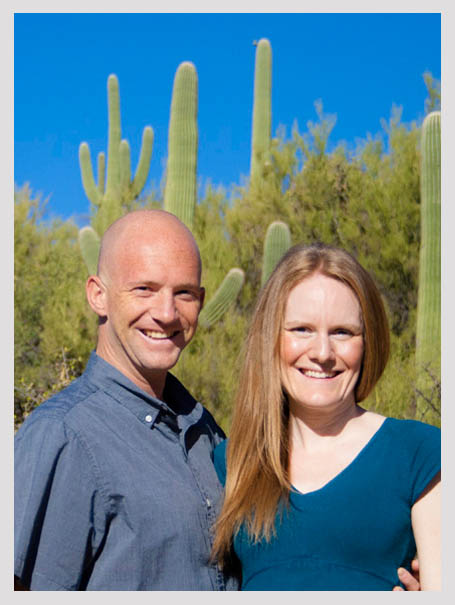May 16th, 2016  Keeping your landscape trimmed up has additional benefits beyond just the aesthetic appeal. Spring and summer are the times when we see the most growth in most plants & trees with the warmer weather. Here are a few notable spots to make sure you keep tidied up. Keeping your landscape trimmed up has additional benefits beyond just the aesthetic appeal. Spring and summer are the times when we see the most growth in most plants & trees with the warmer weather. Here are a few notable spots to make sure you keep tidied up.
1. Trees – Two common spots to focus on are trees that overhang your roof and trees that overhang a sidewalk. Unkempt trees can damage a roof and lead to HOA violation letters if it encroaches a sidewalk.
2. Bushes should be kept trimmed up and several feet away from the side of your house to eliminate moisture & house contact that leads to ideal conditions for termites to thrive.
3. Create a clear buffer area around your landscaped yard to keep pack rats from creating nests.
April 21st, 2016  Carbon monoxide is a dangerous, and potentially even deadly, odorless gas. Because it’s colorless and tasteless too it’s often been dubbed the silent killer. The gas inhibits the blood’s capacity to carry oxygen and symptoms of exposure to carbon monoxide include dizziness, severe headaches, nausea, sleepiness, fatigue or weakness, and disorientation. Within our homes this gas can be produced by any fuel-burning appliance. This includes a gas water heater, stove/oven, dryer, fireplace, furnace, or portable heater. It’s also possible for vehicles or generators in a garage to generate carbon monoxide. The best way to identify carbon monoxide in your home is to purchase a carbon monoxide alarm. Check your home today as most homes don’t have any installed. Also, check all gas appliances annually for leaks. Carbon monoxide is a dangerous, and potentially even deadly, odorless gas. Because it’s colorless and tasteless too it’s often been dubbed the silent killer. The gas inhibits the blood’s capacity to carry oxygen and symptoms of exposure to carbon monoxide include dizziness, severe headaches, nausea, sleepiness, fatigue or weakness, and disorientation. Within our homes this gas can be produced by any fuel-burning appliance. This includes a gas water heater, stove/oven, dryer, fireplace, furnace, or portable heater. It’s also possible for vehicles or generators in a garage to generate carbon monoxide. The best way to identify carbon monoxide in your home is to purchase a carbon monoxide alarm. Check your home today as most homes don’t have any installed. Also, check all gas appliances annually for leaks.
March 17th, 2016 Continued growth throughout the Marana & Oro Valley communities in neighborhoods like Maracay’s Center Pointe Vistoso and Pulte’s Casa Sevilla do bring along with it increased traffic volume. One stretch of road in particular which has become increasingly crowded is Tangerine Road. While Oro Valley had previously expanded much of its portion between Oracle & La Canada many years ago, the corridor further west all the way to the freeway has remained only two lanes. Thankfully expansion of this section is finally coming and is funded as part of the 2006 Regional Transportation Authority (RTA) plan approved by voters. Final design work has concluded for the initial improvements between Twin Peaks/Dove Mountain and La Canada & construction has now officially begun. The remaining section out to I-10 is set for some time between 2022 – 2026. This project is unique in that it’s a collaborative effort between multiple jurisdictions including the RTA, Town of Marana, Pima County & Oro Valley.
Among the many benefits this project brings are: four lanes of travel, wide bike lanes, wildlife corridors, pedestrian paths, turn lanes, and eliminating road dips. All of these facets provide for safer travel and the elimination of the roadway dips means there will be no road closures during storms. Of course the expansion of the pedestrian paths will also be exciting for runners, walkers, and bikers who now can link to existing paths on Dove Mountain & Twin Peaks on the west side to the Tangerine paths that stop currently at La Canada. Most of the road improvements will be curbed desert parkway style like the existing Tangerine corridor in Oro Valley. For more detailed information you can visit the informational website for the project set up at: http://tangerineroad.info
January 18th, 2016  One of the greatest draws to Arizona for many people is the opportunity to get outdoors and enjoy nature throughout so much of the year. The Move Across 2 Ranges event coming up in Marana & Oro Valley on Saturday, March 26th gives residents just that chance. This is the 5th Annual year of the hiking challenge which offers four different distances that participants can sign up for ranging from 5.5 total miles to 21.5 miles. Each challenge consists of a hike in the Tortolita Mountains at the Wild Burro Trailhead in Dove Mountain and a hike beginning at Catalina State Park in the Catalina Mountains. Pre-Register before February 1st and the price is only $25 per participant and includes: event day support, snacks, trail passport, raffle entry, access to trailheads, and a ticket to the packet pick-up party at Summit Hut the night before (free beer included) and the “Managed the Move” party at the completion. Visit http://www.maranaaz.gov/move for more info! One of the greatest draws to Arizona for many people is the opportunity to get outdoors and enjoy nature throughout so much of the year. The Move Across 2 Ranges event coming up in Marana & Oro Valley on Saturday, March 26th gives residents just that chance. This is the 5th Annual year of the hiking challenge which offers four different distances that participants can sign up for ranging from 5.5 total miles to 21.5 miles. Each challenge consists of a hike in the Tortolita Mountains at the Wild Burro Trailhead in Dove Mountain and a hike beginning at Catalina State Park in the Catalina Mountains. Pre-Register before February 1st and the price is only $25 per participant and includes: event day support, snacks, trail passport, raffle entry, access to trailheads, and a ticket to the packet pick-up party at Summit Hut the night before (free beer included) and the “Managed the Move” party at the completion. Visit http://www.maranaaz.gov/move for more info!
January 12th, 2016 
Another one of those neglected household maintenance items that many of us have put off time and time again is grout touch up. This can be grout between tile in your shower, on your bathroom counters, kitchen counters, or of course your floor tile as well. Not only is old, cracked grout an eyesore, but it also collects dirt and can be a breeding ground for bacteria. Some simple periodic maintenance will rapidly transform ugly grout to a like-new appearance.
- Using either a small power tool like a Dremel or a hand tool, remove the old, cracked grout carefully. Check with your local home improvement store for the best applicable tool for your needs and surface, but be prepared for a little bit of a labor intensive process.
- Once the grout is removed, it’s much easier to regrout. Simply mix your grout powder with the specified quantity of water based on the manufacturer’s directions in a bucket.
- Apply the grout with a plastic trowel or similar tool.
- Then use a grout float to press the mortar deeply into the joints which will help avoid future pitting. Typically it’s best to maintain approximately a 45 degree angle with the grout float during this process.
- Next, take the grout float at a nearly perpendicular angle of about 80 degrees to remove excess grout.
- Last, use a wet sponge to mop up any remaining grout or haze.
After letting the grout harden for 36 hours you’ll love the result!
December 20th, 2015  With winter almost at our doorstep we’d like to remind everyone to prepare your homes for our occasional cold Tucson nights. Even though we are blessed with many days of sunshine, our evening temperatures can pose a hazard several times a year to our home’s plumbing systems. Protect your home by either temporarily wrapping your exposed pipes with blankets/towels or ideally installing insulation on them. There are a variety of insulation products at your local home improvement store which can really save you money when compared with repairing a broken water pipe, not to mention a lot of inconvenience. Another helpful tip is to keep a slow drip coming from your faucets on very cold evenings to further protect against frozen or burst pipes. Installing foam or other insulated products on your exposed water pipes is a very easy do-it-yourself job for most owners. Depending upon the insulating materials you bought, it may also be a good idea to wrap them with some electrical tape or duct tape to keep them in place year-round. While we haven’t had any very cold mornings yet, don’t wait until it’s too late! With winter almost at our doorstep we’d like to remind everyone to prepare your homes for our occasional cold Tucson nights. Even though we are blessed with many days of sunshine, our evening temperatures can pose a hazard several times a year to our home’s plumbing systems. Protect your home by either temporarily wrapping your exposed pipes with blankets/towels or ideally installing insulation on them. There are a variety of insulation products at your local home improvement store which can really save you money when compared with repairing a broken water pipe, not to mention a lot of inconvenience. Another helpful tip is to keep a slow drip coming from your faucets on very cold evenings to further protect against frozen or burst pipes. Installing foam or other insulated products on your exposed water pipes is a very easy do-it-yourself job for most owners. Depending upon the insulating materials you bought, it may also be a good idea to wrap them with some electrical tape or duct tape to keep them in place year-round. While we haven’t had any very cold mornings yet, don’t wait until it’s too late!
December 12th, 2015  Composting is the process of taking organic material that is generated around households and turning it into usable, nutrient rich soil that can boost the performance of soil in your garden. Another benefit of composting is keeping these organic materials, which comprise approximately 20 to 30 percent of what is typically thrown away in households, out of landfills where they take up space and release methane, a potent greenhouse gas. Composting is the process of taking organic material that is generated around households and turning it into usable, nutrient rich soil that can boost the performance of soil in your garden. Another benefit of composting is keeping these organic materials, which comprise approximately 20 to 30 percent of what is typically thrown away in households, out of landfills where they take up space and release methane, a potent greenhouse gas.
 There are countless resources available to help you start a compost pile at home but here are some basics. Select a dry, shady spot near a water source for your compost pile or bin (which are available at home improvement stores). Composts consist of brown materials (branches, shredded newspaper) which are the lower layer of materials, and green material such as fruit scraps, vegetable waste, and grass clippings. Tending to the compost is as simple as managing the moisture level and turning it with a pitchfork or similar every week or two to create air movement. A general rule of thumb for the moisture level is for your compost pile to resemble a sponge that has been wrung out. Keep up with your compost pile and in time you’ll have nutrient rich soil! There are countless resources available to help you start a compost pile at home but here are some basics. Select a dry, shady spot near a water source for your compost pile or bin (which are available at home improvement stores). Composts consist of brown materials (branches, shredded newspaper) which are the lower layer of materials, and green material such as fruit scraps, vegetable waste, and grass clippings. Tending to the compost is as simple as managing the moisture level and turning it with a pitchfork or similar every week or two to create air movement. A general rule of thumb for the moisture level is for your compost pile to resemble a sponge that has been wrung out. Keep up with your compost pile and in time you’ll have nutrient rich soil!
November 30th, 2015  Part of maintaining an energy efficient home is ensuring your windows are properly sealed. Eliminating air leaks can help you save money on utility bills and prevents the intrusion of moisture as well. Over time the caulking around windows can crack or chip away, as seen in the picture to the right. Periodic maintenance is required to properly maintain your home. However, this is an easy DIY project and is relatively inexpensive as well. Part of maintaining an energy efficient home is ensuring your windows are properly sealed. Eliminating air leaks can help you save money on utility bills and prevents the intrusion of moisture as well. Over time the caulking around windows can crack or chip away, as seen in the picture to the right. Periodic maintenance is required to properly maintain your home. However, this is an easy DIY project and is relatively inexpensive as well.
 First, identify the windows that need to be caulked to gauge how much caulk you’ll need to purchase. Visit any home improvement store to purchase your materials and utilize their expertise to identify the right type of caulk for your specific application, but typically avoid an acrylic latex as it’s not as responsive to temperature changes that an exterior caulk will be exposed to, and isn’t very durable to moisture. Make sure to get a caulking gun if you don’t already have one. Select a moderate temperature day for application, remove old caulking, then lay down a continuous bead thick enough to fill the gap, and smooth over. Wait 24 hours to dry fully and paint if necessary. First, identify the windows that need to be caulked to gauge how much caulk you’ll need to purchase. Visit any home improvement store to purchase your materials and utilize their expertise to identify the right type of caulk for your specific application, but typically avoid an acrylic latex as it’s not as responsive to temperature changes that an exterior caulk will be exposed to, and isn’t very durable to moisture. Make sure to get a caulking gun if you don’t already have one. Select a moderate temperature day for application, remove old caulking, then lay down a continuous bead thick enough to fill the gap, and smooth over. Wait 24 hours to dry fully and paint if necessary.
November 19th, 2015 Oro Valley Water Utility clients can now sign up for the FREE AquaHawk Alerting service. Once registered this program allows you to monitor your household water usage & receive alerts via email, text, or phone if your use exceeds your self-identified threshold. The benefits include:
Receive Timely Leak Alerts – You specify how you want to be contacted: email, text, or telephone. When your usage indicates a leak, they’ll contact you. AquaHawk helps prevent costly property damage from unrepaired leaks and gives you peace of mind when you’re away from home. This program is therefore especially ideal for seasonal residents.
Monitor Water Usage – See how much water you’re using and an estimate of your bill anytime during the billing cycle.
Manage Water Expenses – With Threshold Billing, you specify an amount of money (in dollars) or water (in gallons) you don’t want to surpass each month. If your usage is trending to exceed that value, we’ll send you an email alert. This function of the program provides excellent fiscal household management.
Learn Ways to Save – Get a better understanding of how you’re using water by performing useful comparisons online. See how you compare to similar households. Then learn effective ways to redue water usage and save money every month!
I have personally signed up for this program and have found it very user friendly.
October 1st, 2015 The coming changes to the real estate closing process for financed transactions have been trumpeted by some as ominous or potentially disastrous for the real estate market. Exaggerations and misunderstandings have led to this sense of impending doom, but the reality is that these changes are beneficial for consumers and won’t markedly delay the vast majority of transactions. What this will require is even better communication between all those involved in a transaction. This will include all real estate agents, the lender, title company, and escrow officer. All the more reason to employ premier caliber agents like Team Woodall (shameless plug indeed) who can efficiently communicate and navigate the closing process. Now, this summary below isn’t meant to cover the minutiae of the new guidelines but rather provide an overview of the key points.
These new TILA-RESPA requirements take effect October 3rd, 2015.
Loan Estimate
Previously lenders were required to provide borrowers with a Good Faith Estimate and Truth-in-Lending disclosures after receiving their loan application. These documents are being replaced by the new Loan Estimate form which also must be sent to the borrower within three days of receiving the completed loan application. A sample of this new document can be viewed at this link. One of the goals of the new Loan Estimate was to make information provided to the consumer much easier to understand and view. A simplification of the information is hoped to create more informed consumers.
Page one of the new Loan Estimate contains general information about the borrower, property, and loan type. Below that are three distinct sections regarding the loan terms, projected payments, and costs at closing. Page two of the loan estimate provides those closing cost details. This includes the costs associated with the loan itself on the left column which are further broken into categories of origination charges, services you cannot shop for (appraisal fee, credit report, etc.), services you can shop for (pest inspection fee, title policies, etc.), and then it tallies those total loan costs. The right column shows other closing costs that are put into the categories of taxes and government fees, prepaids (homeowner’s insurance, mortgage insurance, prepaid interest, and property taxes), initial escrow payment at closing, other fees, and then a total amount of all these costs. The very last part of that page is a breakdown of the cash needed to close. The final page allows for easy comparisons from lender to lender and other considerations like whether the loan is assumable, late payment charges, and if the loan originator will service the loan or sell it.
Closing Disclosure
Now, the Closing Disclosure and its timeline is where most the “nervousness” arises with these new requirements. A sample of this new Closing Disclosure document can be viewed at this link. The information on the Closing Disclosure mirrors much of what was on the Loan Estimate. This is done purposefully so buyers can directly compare what was quoted to them and the final charges at closing. One change with this form though is that it’s going to be prepared more by the lender than the title/escrow company as has been the custom previously.
The biggest change with the new Closing Disclosure is that lenders must provide this Closing Disclosure at least three business days before the consummation of the loan. Previously some transactions had lenders sending over documents the day of closing to the escrow company and buyers scrambling to get in and sign to close the transaction. This will no longer be the reality and lenders will have to be much more proactive. Additionally, there are triggers which can cause a new three-day review period for the buyer. These events are:
1. The APR (annual percentage rate) increases by more than 1/8 of a percent for regular loans (most fixed-rate loans) or 1/4 of a percent for irregular loans (most adjustable loans). It’s noteworthy that a decrease in the APR does not necessitate a new three-day review if it’s because of a change to the interest rate or other fees. Lenders have been required to provide this review for APR changes since 2009 actually.
2. A prepayment penalty is added – as this would make it more expensive to refinance or sell.
3. The basic loan product changes. This would be a switch from a fixed-rate loan to an adjustable for instance.
As you can see above there aren’t too many usual circumstances that would cause an additional 3-day review that could delay a transaction from closing as scheduled. Overall it’s going to be more common to see 45-day closings rather than the more typical 30-day closings that occur here in Arizona with frequency. This will allow for more time that the lender can use to ensure the Closing Disclosure gets out to the buyer with three business days time. Better to under promise and over deliver than the opposite. The takeaway is that while there will be some additional requirements and new forms associated with TRID it’s not going to have a huge impact on most sales. Contact Team Woodall if you have any questions about these new requirements that are just about to take effect.
|
Client Testimonials"Honest and professional, I will never use another agent and recommend them to anyone thinking about buying or selling a home. I really can't say enough about how wonderful they are." - Heather View More Testimonials |
 Keeping your landscape trimmed up has additional benefits beyond just the aesthetic appeal. Spring and summer are the times when we see the most growth in most plants & trees with the warmer weather. Here are a few notable spots to make sure you keep tidied up.
Keeping your landscape trimmed up has additional benefits beyond just the aesthetic appeal. Spring and summer are the times when we see the most growth in most plants & trees with the warmer weather. Here are a few notable spots to make sure you keep tidied up.




 One of the greatest draws to Arizona for many people is the opportunity to get outdoors and enjoy nature throughout so much of the year. The Move Across 2 Ranges event coming up in Marana & Oro Valley on Saturday, March 26th gives residents just that chance. This is the 5th Annual year of the hiking challenge which offers four different distances that participants can sign up for ranging from 5.5 total miles to 21.5 miles. Each challenge consists of a hike in the Tortolita Mountains at the Wild Burro Trailhead in Dove Mountain and a hike beginning at Catalina State Park in the Catalina Mountains. Pre-Register before February 1st and the price is only $25 per participant and includes: event day support, snacks, trail passport, raffle entry, access to trailheads, and a ticket to the packet pick-up party at Summit Hut the night before (free beer included) and the “Managed the Move” party at the completion. Visit http://www.maranaaz.gov/move for more info!
One of the greatest draws to Arizona for many people is the opportunity to get outdoors and enjoy nature throughout so much of the year. The Move Across 2 Ranges event coming up in Marana & Oro Valley on Saturday, March 26th gives residents just that chance. This is the 5th Annual year of the hiking challenge which offers four different distances that participants can sign up for ranging from 5.5 total miles to 21.5 miles. Each challenge consists of a hike in the Tortolita Mountains at the Wild Burro Trailhead in Dove Mountain and a hike beginning at Catalina State Park in the Catalina Mountains. Pre-Register before February 1st and the price is only $25 per participant and includes: event day support, snacks, trail passport, raffle entry, access to trailheads, and a ticket to the packet pick-up party at Summit Hut the night before (free beer included) and the “Managed the Move” party at the completion. Visit http://www.maranaaz.gov/move for more info!
 With winter almost at our doorstep we’d like to remind everyone to prepare your homes for our occasional cold Tucson nights. Even though we are blessed with many days of sunshine, our evening temperatures can pose a hazard several times a year to our home’s plumbing systems. Protect your home by either temporarily wrapping your exposed pipes with blankets/towels or ideally installing insulation on them. There are a variety of insulation products at your local home improvement store which can really save you money when compared with repairing a broken water pipe, not to mention a lot of inconvenience. Another helpful tip is to keep a slow drip coming from your faucets on very cold evenings to further protect against frozen or burst pipes. Installing foam or other insulated products on your exposed water pipes is a very easy do-it-yourself job for most owners. Depending upon the insulating materials you bought, it may also be a good idea to wrap them with some electrical tape or duct tape to keep them in place year-round. While we haven’t had any very cold mornings yet, don’t wait until it’s too late!
With winter almost at our doorstep we’d like to remind everyone to prepare your homes for our occasional cold Tucson nights. Even though we are blessed with many days of sunshine, our evening temperatures can pose a hazard several times a year to our home’s plumbing systems. Protect your home by either temporarily wrapping your exposed pipes with blankets/towels or ideally installing insulation on them. There are a variety of insulation products at your local home improvement store which can really save you money when compared with repairing a broken water pipe, not to mention a lot of inconvenience. Another helpful tip is to keep a slow drip coming from your faucets on very cold evenings to further protect against frozen or burst pipes. Installing foam or other insulated products on your exposed water pipes is a very easy do-it-yourself job for most owners. Depending upon the insulating materials you bought, it may also be a good idea to wrap them with some electrical tape or duct tape to keep them in place year-round. While we haven’t had any very cold mornings yet, don’t wait until it’s too late! Composting is the process of taking organic material that is generated around households and turning it into usable, nutrient rich soil that can boost the performance of soil in your garden. Another benefit of composting is keeping these organic materials, which comprise approximately 20 to 30 percent of what is typically thrown away in households, out of landfills where they take up space and release methane, a potent greenhouse gas.
Composting is the process of taking organic material that is generated around households and turning it into usable, nutrient rich soil that can boost the performance of soil in your garden. Another benefit of composting is keeping these organic materials, which comprise approximately 20 to 30 percent of what is typically thrown away in households, out of landfills where they take up space and release methane, a potent greenhouse gas.  There are countless resources available to help you start a compost pile at home but here are some basics. Select a dry, shady spot near a water source for your compost pile or bin (which are available at home improvement stores). Composts consist of brown materials (branches, shredded newspaper) which are the lower layer of materials, and green material such as fruit scraps, vegetable waste, and grass clippings. Tending to the compost is as simple as managing the moisture level and turning it with a pitchfork or similar every week or two to create air movement. A general rule of thumb for the moisture level is for your compost pile to resemble a sponge that has been wrung out. Keep up with your compost pile and in time you’ll have nutrient rich soil!
There are countless resources available to help you start a compost pile at home but here are some basics. Select a dry, shady spot near a water source for your compost pile or bin (which are available at home improvement stores). Composts consist of brown materials (branches, shredded newspaper) which are the lower layer of materials, and green material such as fruit scraps, vegetable waste, and grass clippings. Tending to the compost is as simple as managing the moisture level and turning it with a pitchfork or similar every week or two to create air movement. A general rule of thumb for the moisture level is for your compost pile to resemble a sponge that has been wrung out. Keep up with your compost pile and in time you’ll have nutrient rich soil! Part of maintaining an energy efficient home is ensuring your windows are properly sealed. Eliminating air leaks can help you save money on utility bills and prevents the intrusion of moisture as well. Over time the caulking around windows can crack or chip away, as seen in the picture to the right. Periodic maintenance is required to properly maintain your home. However, this is an easy DIY project and is relatively inexpensive as well.
Part of maintaining an energy efficient home is ensuring your windows are properly sealed. Eliminating air leaks can help you save money on utility bills and prevents the intrusion of moisture as well. Over time the caulking around windows can crack or chip away, as seen in the picture to the right. Periodic maintenance is required to properly maintain your home. However, this is an easy DIY project and is relatively inexpensive as well. First, identify the windows that need to be caulked to gauge how much caulk you’ll need to purchase. Visit any home improvement store to purchase your materials and utilize their expertise to identify the right type of caulk for your specific application, but typically avoid an acrylic latex as it’s not as responsive to temperature changes that an exterior caulk will be exposed to, and isn’t very durable to moisture. Make sure to get a caulking gun if you don’t already have one. Select a moderate temperature day for application, remove old caulking, then lay down a continuous bead thick enough to fill the gap, and smooth over. Wait 24 hours to dry fully and paint if necessary.
First, identify the windows that need to be caulked to gauge how much caulk you’ll need to purchase. Visit any home improvement store to purchase your materials and utilize their expertise to identify the right type of caulk for your specific application, but typically avoid an acrylic latex as it’s not as responsive to temperature changes that an exterior caulk will be exposed to, and isn’t very durable to moisture. Make sure to get a caulking gun if you don’t already have one. Select a moderate temperature day for application, remove old caulking, then lay down a continuous bead thick enough to fill the gap, and smooth over. Wait 24 hours to dry fully and paint if necessary.



Connect With Us!